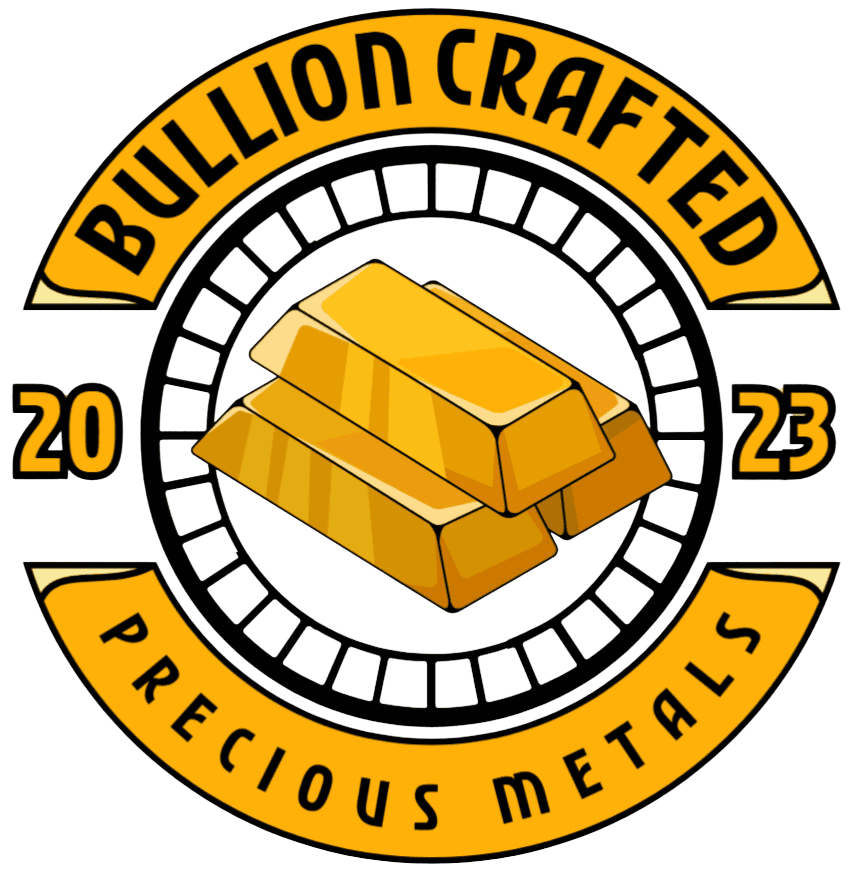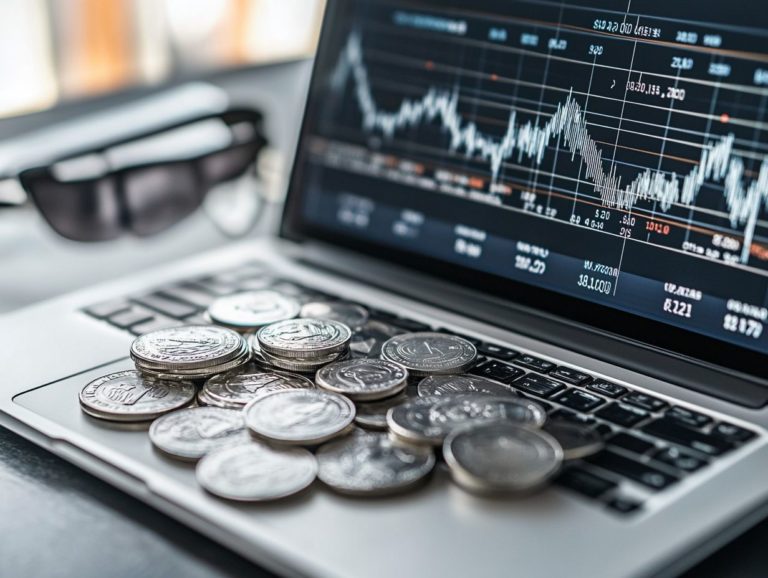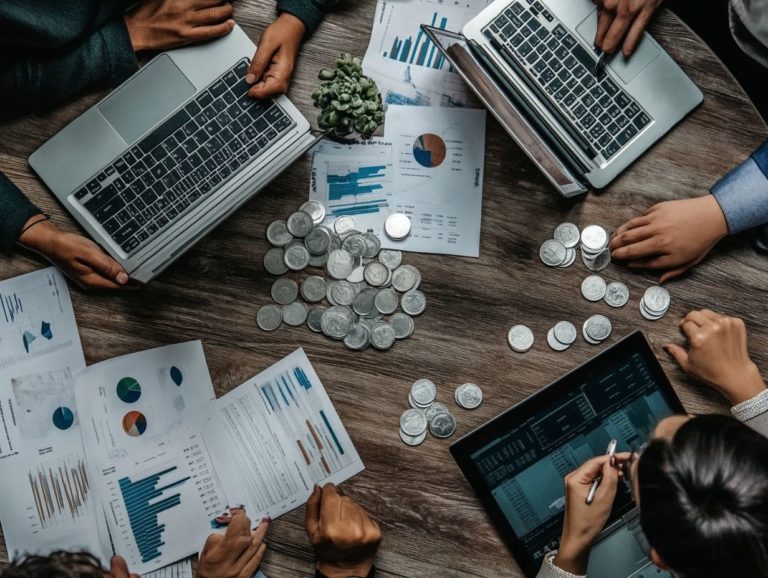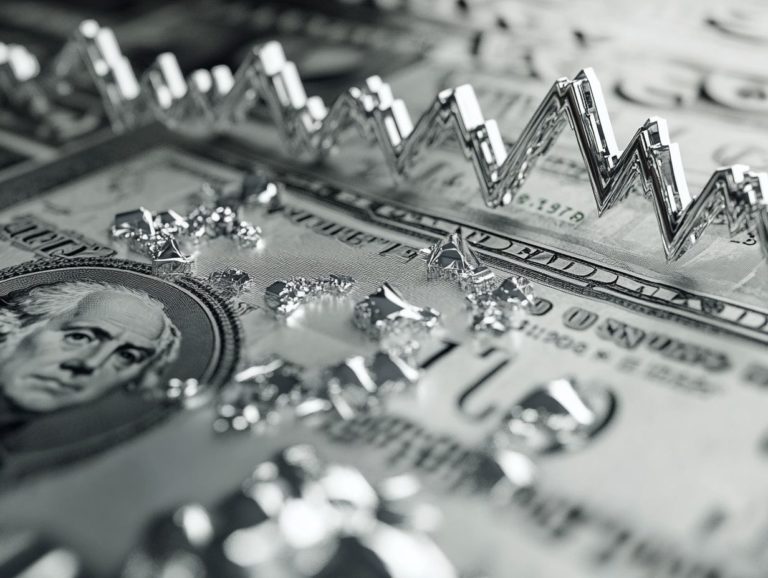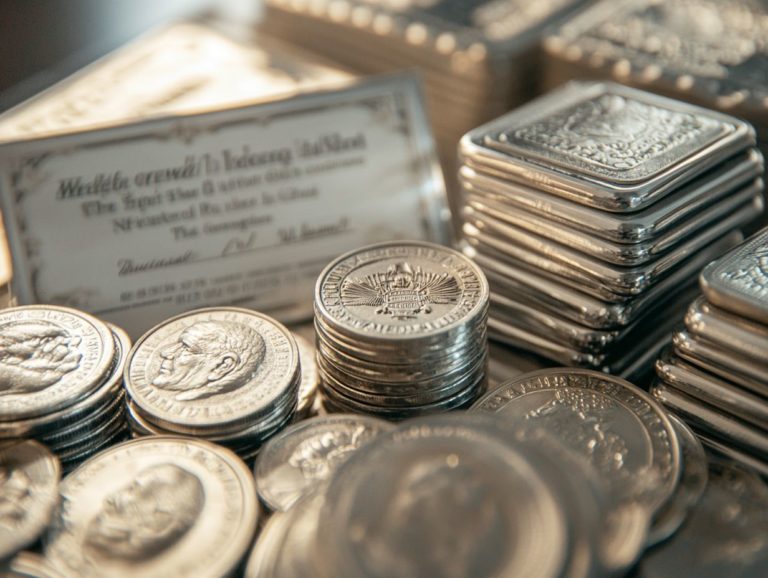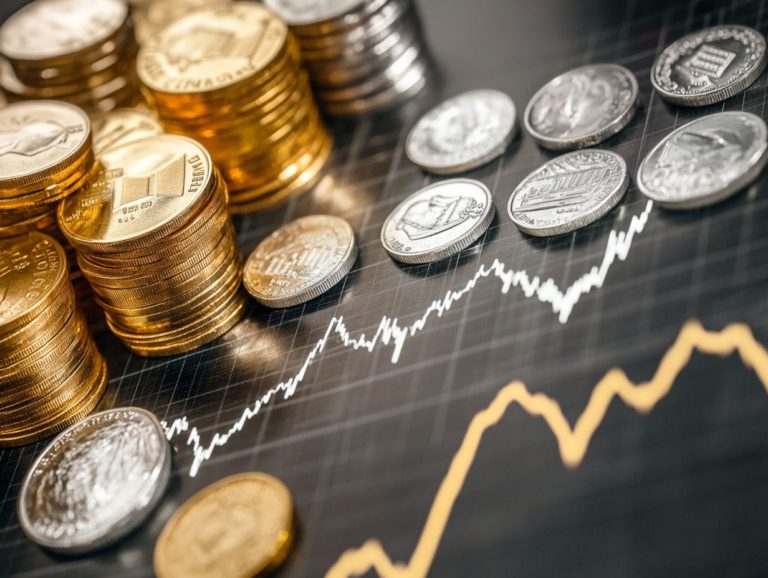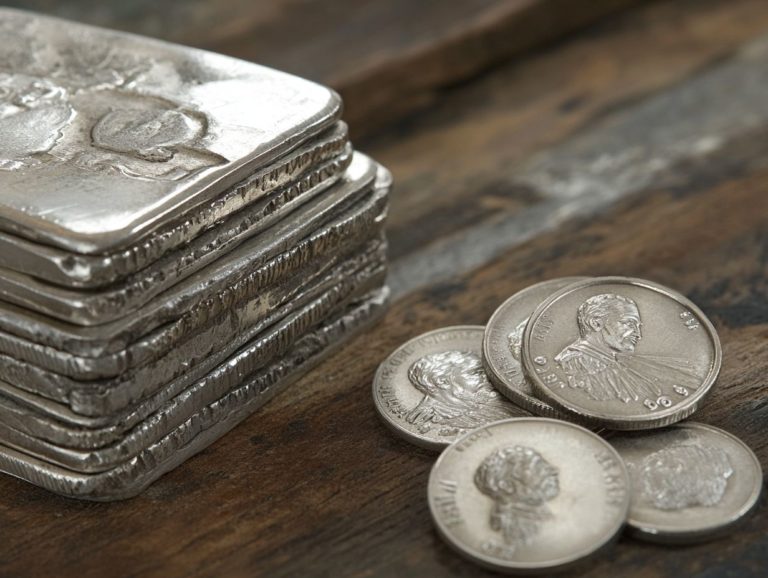Pros and Cons of Investing in Silver ETFs
Investing in silver ETFs has emerged as a compelling option for anyone seeking to diversify their portfolio and take advantage of the precious metal’s inherent value. Consider the benefits and drawbacks before making a decision.
This article delves into the key advantages that make silver ETFs particularly enticing, such as enhanced liquidity and lower costs. However, it’s essential to weigh these benefits against potential downsides, including market volatility and the limited control you have over your investments.
When considering silver ETFs, important factors include current market trends and your individual investment goals, which are essential for making informed decisions.
By understanding the pros and cons associated with silver ETFs, you can craft a well-rounded investment strategy that aligns with your financial aspirations.
Contents
- Key Takeaways:
- Pros of Investing in Silver ETFs
- Cons of Investing in Silver ETFs
- Factors to Consider Before Investing in Silver ETFs
- Frequently Asked Questions
- Why Should You Consider Investing in Silver ETFs?
- What are the advantages of investing in Silver ETFs?
- Are there any disadvantages to investing in Silver ETFs?
- How does investing in Silver ETFs compare to owning physical silver?
- What are the risks associated with investing in Silver ETFs?
- Are there any tax implications when investing in Silver ETFs?
Key Takeaways:
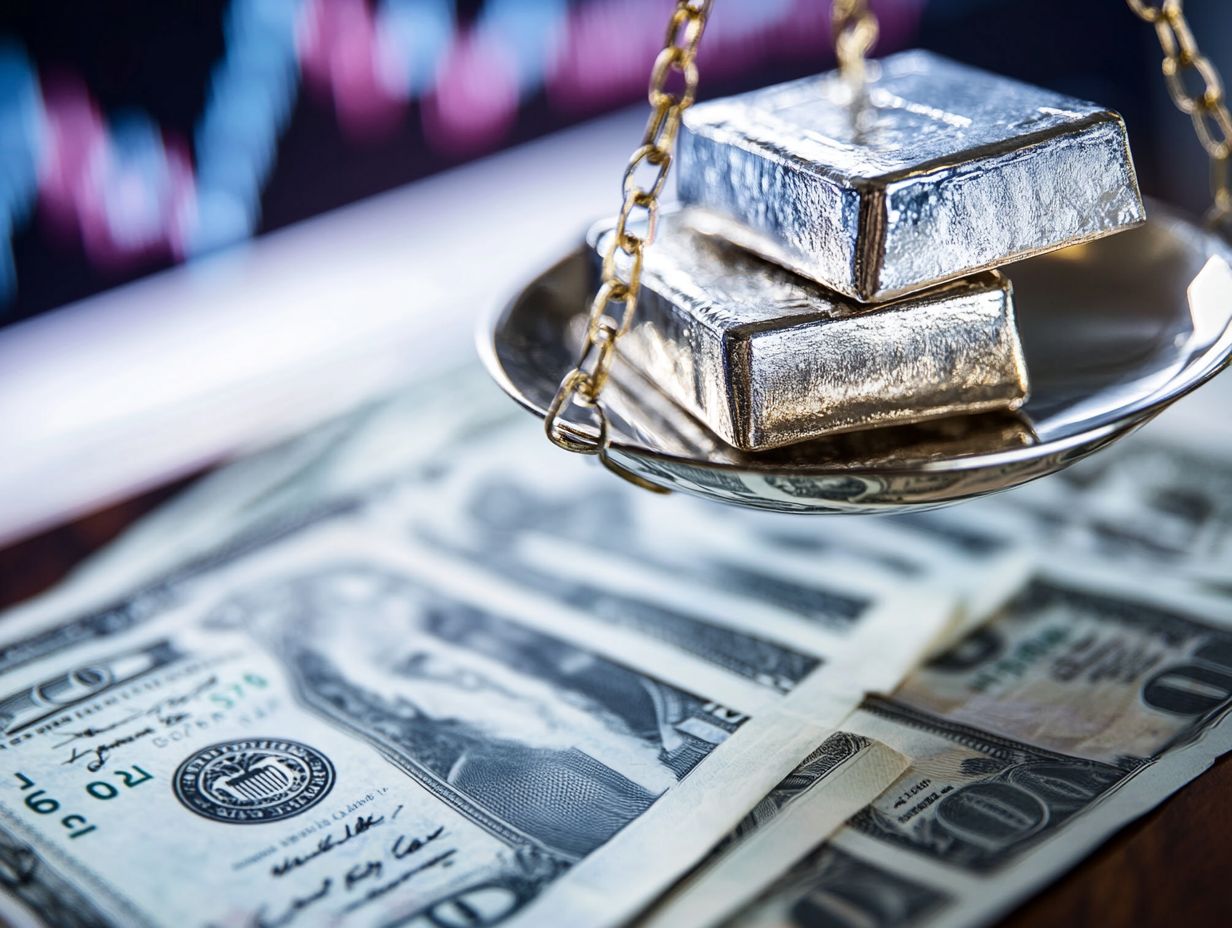
- The diversification and liquidity offered by silver ETFs make them a convenient and cost-effective option for investors.
- Market volatility and limited control over assets must be considered along with personal investment goals.
- Research market trends to make informed decisions about potential returns and risks.
What are Silver ETFs?
Silver ETFs, or exchange-traded funds, are smart investment options that allow you to track the price of physical silver. This means you can gain exposure to the silver market without the hassle of directly holding silver bullion.
These ETFs follow the price of silver directly, enhancing your liquidity and enabling quick buying and selling on exchanges. They also offer diversification benefits for your investment portfolio, making them particularly appealing if you’re looking to mitigate risk in the face of fluctuating market trends. Additionally, if you’re considering other precious metal investments, investing in gold jewelry has its own unique pros and cons. Silver ETFs can serve as a hedge against economic uncertainties, providing a strategic layer of protection.
You can access the broader precious metals market without dealing with the logistical challenges of silver mining companies or the intricacies of physical silver storage. With lower management fees and a straightforward investment structure, silver ETFs are designed to attract a wide range of investors who appreciate the stability and historical value of silver. However, if you’re considering diversifying your investments, it’s also worth looking into the pros and cons of gold IRAs for a balanced approach.
Pros of Investing in Silver ETFs
Investing in silver ETFs presents a wealth of advantages, making them an attractive option for both novice and seasoned investors eager to diversify their portfolios and seize market opportunities.
The benefits are substantial: you gain enhanced liquidity, enjoy lower trading costs compared to physical silver, and tap into the potential for capital gains all of which harmonize with sound investment strategies.
Diversification and Liquidity
Diversification and liquidity stand out as two essential advantages of investing in silver ETFs. These allow you to spread your risk across various financial instruments while ensuring easy access and trading efficiency in the silver market.
By incorporating silver ETFs into your investment portfolio, you can reduce your exposure to any single asset or counterparty, significantly lowering the potential for adverse effects during times of economic uncertainty. This strategy not only enhances your portfolio’s stability but also offers protection during market turbulence, as silver has a long-standing reputation for retaining value.
The high liquidity associated with silver ETFs enables you to make swift transitions in and out of positions, giving you the power to seize market opportunities or hedge against losses with minimal effort. For those considering alternative investments, investing in silver jewelry: pros and cons can also be an intriguing option. This seamless adjustment capability, combined with the intrinsic value of silver, makes ETFs an appealing option for both seasoned investors and those just starting out.
Lower Costs and Convenience
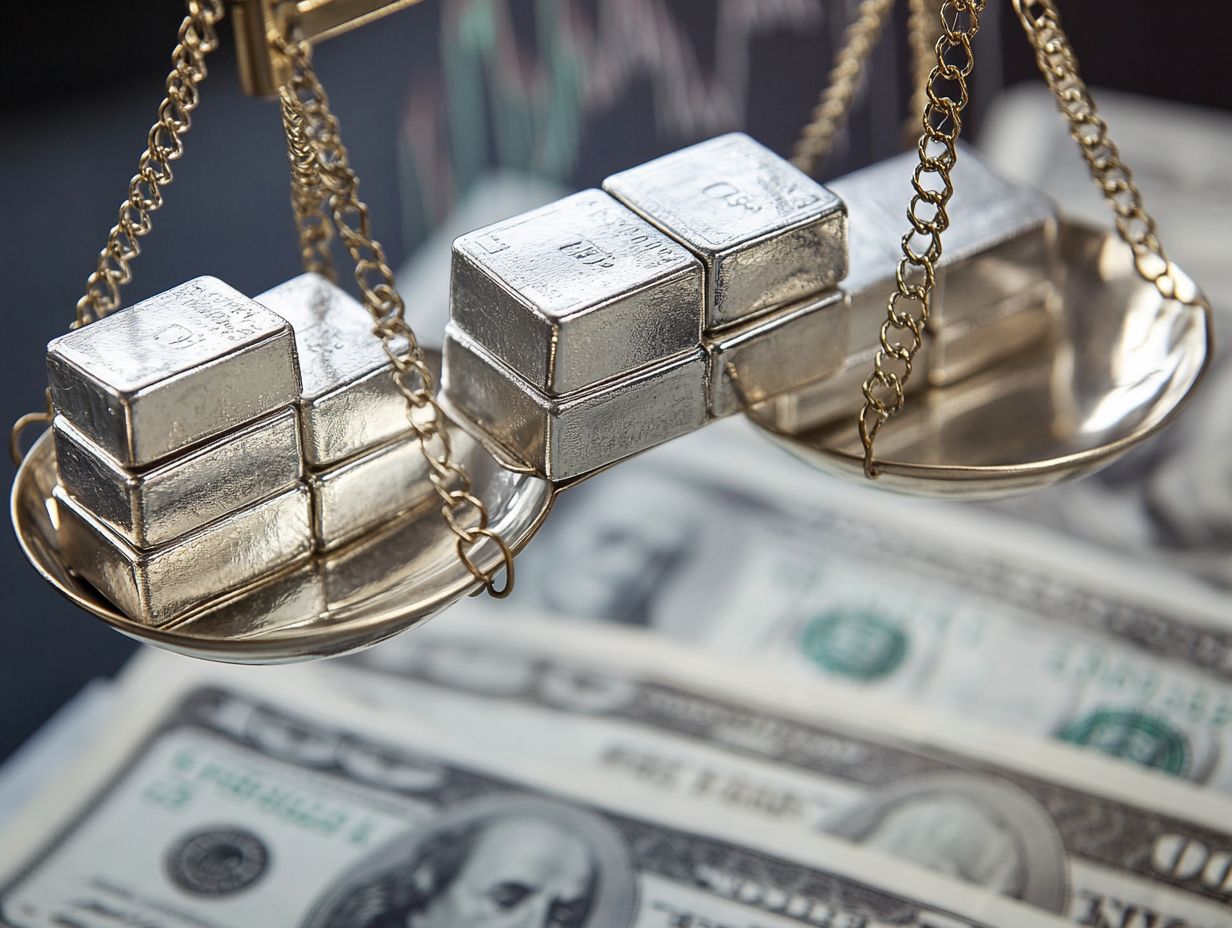
One of the notable advantages of silver ETFs is their lower associated costs and convenience compared to purchasing physical silver bullion. This makes them an appealing investment option for anyone looking to venture into the precious metals market.
As an investor, you can take advantage of reduced trading costs. Silver ETFs typically boast lower expense ratios than those tied to managing physical silver. By eliminating the need for secure storage and insurance, expenses that can accumulate significantly over time, these funds present a more streamlined investment approach. However, it’s important to be aware of the silver investment risks before diving in.
Silver ETFs also sidestep some tax complexities associated with buying and selling physical silver. For those seeking a straightforward entry into silver investments, ETFs serve as a less cumbersome alternative, seamlessly combining liquidity with lower barriers to entry. To better understand the potential benefits, consider exploring the risks and rewards of silver investing.
Cons of Investing in Silver ETFs
While silver ETFs offer a wealth of advantages, it’s essential to weigh the notable drawbacks before diving in. Consider factors such as market volatility and the inherent risks tied to financial instruments.
These elements can limit your control and potentially lead to underperformance considerations that deserve your careful attention.
Market Volatility and Risk
Market volatility presents significant risks for you as an investor in silver ETFs. Fluctuations in silver prices can directly affect your returns. You need effective risk management strategies to navigate the ever-changing economic landscape.
The unpredictable nature of silver prices is influenced by factors like shifts in industrial demand, changes in mining output, and broader economic indicators. As you assess your positions in silver ETFs, it s vital to consider these supply and demand dynamics.
A sudden surge in demand perhaps driven by technological advancements in electronics or renewable energy can propel prices sharply upward. On the flip side, an economic downturn may curb consumer spending on products containing silver, leading to a decline in prices.
To safeguard against these risks, experts advise diversifying your portfolio and regularly analyzing market trends. This proactive approach allows you to strategically adjust your holdings and minimize exposure to potential losses.
Limited Control and Potential for Underperformance
Investing in silver ETFs might leave you feeling somewhat at the mercy of external factors, potentially leading to underperformance due to tracking error the difference between the ETF s performance and the actual silver price and the operational choices made by the ETF issuer.
You may feel a lack of control when fluctuations in trading volumes impact the liquidity and overall value of your investments. When trading volumes dip, you could face a wider bid-ask spread, which can further erode your returns.
On the other hand, direct investments in silver such as physical bullion offer you a tangible asset that you completely own without relying on an intermediary. By owning physical silver, you can avoid concerns related to management fees and tracking inaccuracies often tied to ETFs, paving a more direct path to realizing silver’s intrinsic value.
Factors to Consider Before Investing in Silver ETFs
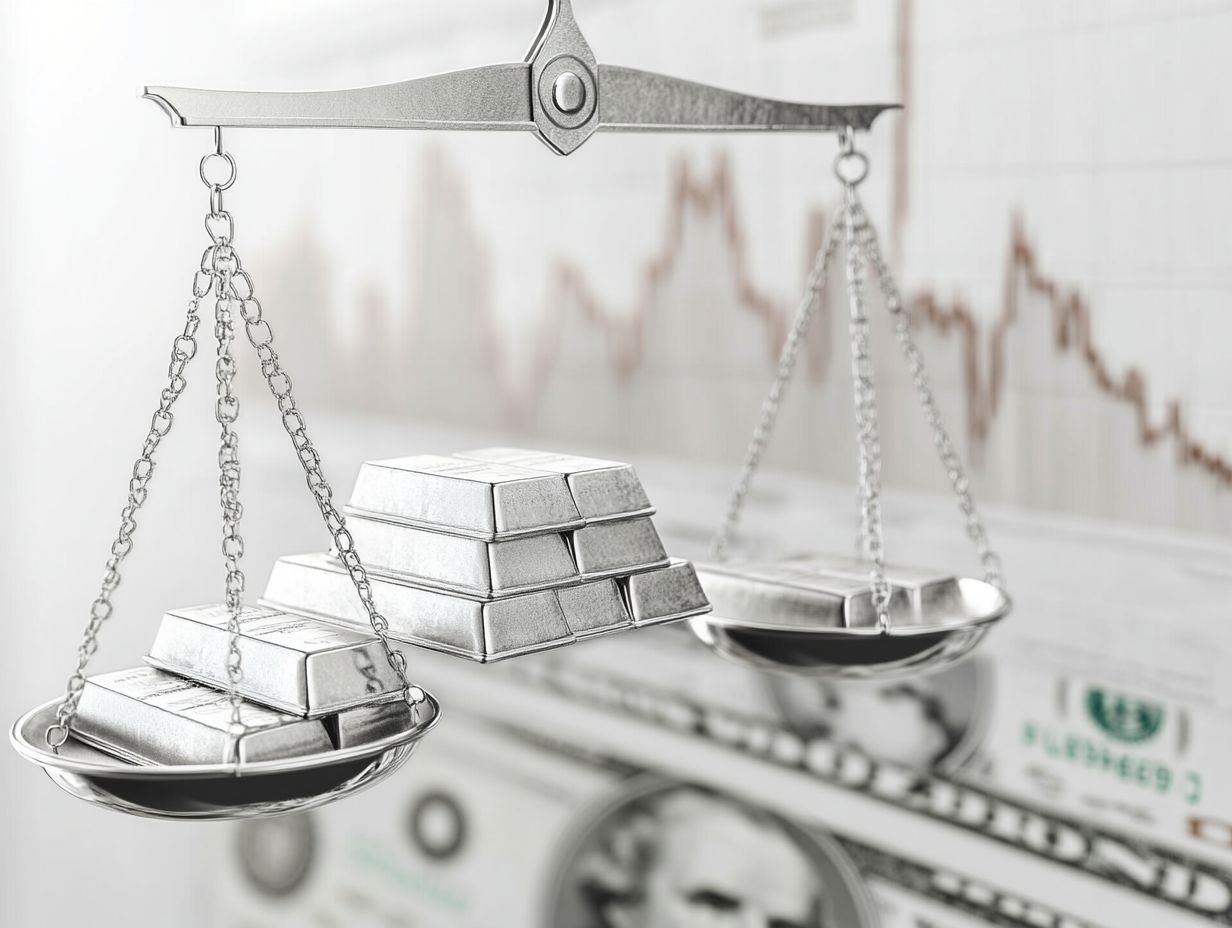
Before you dive into silver ETFs, it s essential to assess the various factors that could influence your investment strategy. Consider market trends, clarify your personal investment goals, and evaluate your risk tolerance levels.
This thoughtful approach empowers you to make a well-informed decision that aligns with your financial aspirations. Don t miss out on the chance to invest wisely!
Market Trends and Forecast
Understanding market trends and forecasts is essential for you as an investor in silver ETFs. Changes in the economy and fluctuations in silver prices can profoundly affect your investment exposure and overall performance.
This landscape is influenced by a myriad of factors. These include the changing demand for industrial applications, geopolitical tensions, and shifts in monetary policy, which refers to how central banks control the money supply and interest rates. As central banks adopt varying positions on interest rates, your feelings as an investor may change, contributing to increased volatility in the silver market.
Especially during times of economic uncertainty, silver often emerges as a safe-haven asset, garnering heightened interest from investors like yourself. The interplay between supply constraints such as mining output and production costs and rising global demand plays a crucial role in determining price trends.
Understanding these factors is key to making smart investment choices and successfully navigating the complexities of silver investments.
Personal Investment Goals and Risk Tolerance
Aligning your personal investment goals with an appropriate risk tolerance is crucial if you re considering silver ETFs. This approach ensures that your investment strategies are tailored specifically to your unique financial situation and objectives.
Before making any decisions, it s essential to understand the relationship between your financial aspirations and the level of risk you’re willing to accept. Start by assessing both your short-term and long-term goals. Consider how silver ETFs fit into your broader investment portfolio.
Evaluating factors like market volatility, historical performance of silver, and current economic conditions can provide you with crucial insights. A well-defined strategy should encompass diversifying your investments and maintaining sufficient liquidity to handle unforeseen expenses.
This ultimately fosters a more secure financial future while you pursue the potential benefits of investing in silver.
Frequently Asked Questions
Why Should You Consider Investing in Silver ETFs?
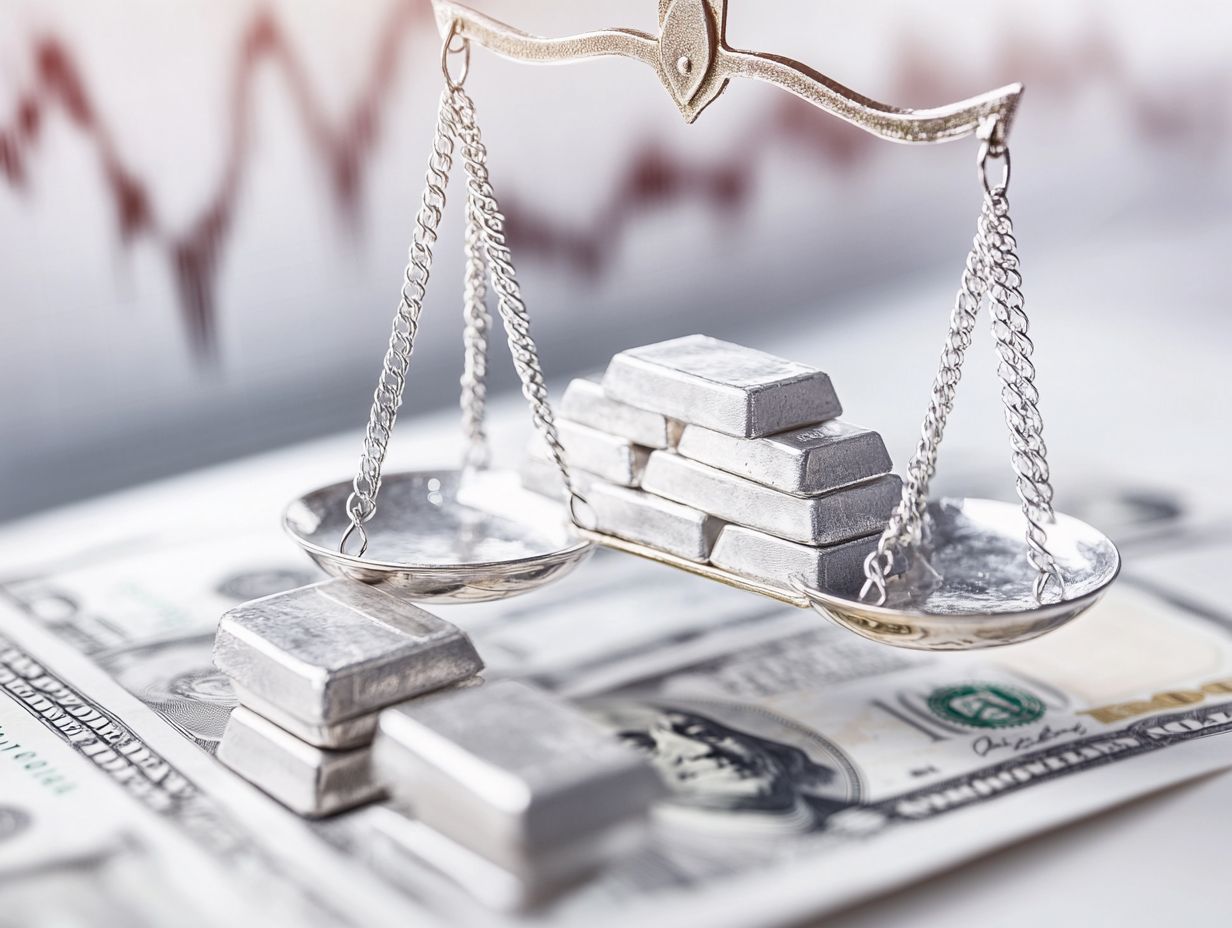
Silver ETFs, or exchange-traded funds, offer investors a way to gain exposure to the silver market without owning physical silver. Here are the main pros and cons to consider before investing:
What are the advantages of investing in Silver ETFs?
One of the main advantages of investing in Silver ETFs is the ease of trading. Unlike physical silver, which may be difficult to buy and sell, ETFs can be bought and sold on stock exchanges with ease. ETFs also allow you to diversify your investments, as they usually hold a variety of silver-related assets.
Are there any disadvantages to investing in Silver ETFs?
One major disadvantage of Silver ETFs is the potential for tracking error. This means that the ETF’s performance may not exactly mirror the performance of the actual silver market. Investors may also have to pay management fees and trading commissions when buying and selling ETFs.
How does investing in Silver ETFs compare to owning physical silver?
Investing in Silver ETFs offers a more convenient and less expensive way to gain exposure to the silver market compared to owning physical silver. ETFs eliminate the need for storage and security concerns that come with owning physical silver.
What are the risks associated with investing in Silver ETFs?
As with any investment, there are risks associated with Silver ETFs. These include market volatility and the potential for losses. If the ETF’s underlying assets are not properly managed, it could negatively impact the ETF’s performance.
Are there any tax implications when investing in Silver ETFs?
Investing in Silver ETFs may have tax implications, such as capital gains tax on profits made from selling the ETF. Additionally, ETFs that hold physical silver may be subject to sales tax when purchasing shares. It’s important to consult a tax professional for specific advice.
Start exploring silver ETFs today to secure your financial future!
